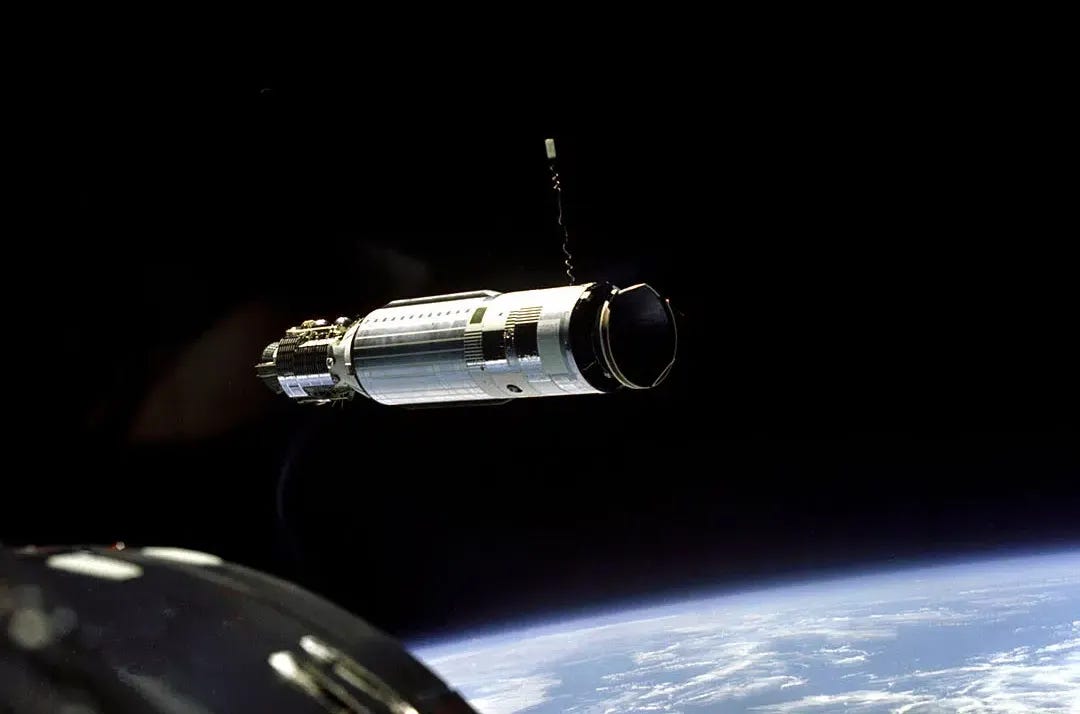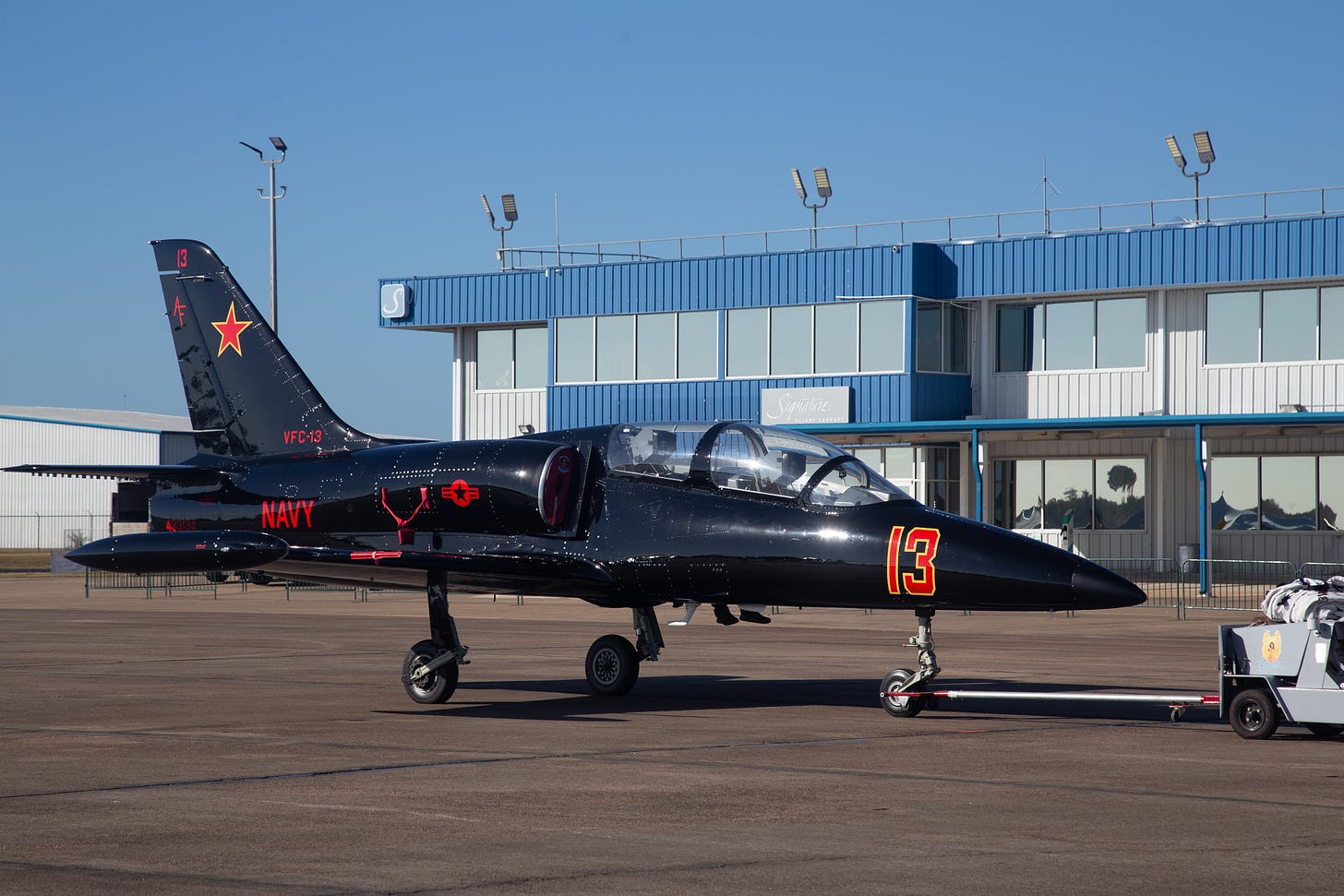Europe Reaffirms F-35 Commitment and Looking Back on a Gemini flight
NATO allies are invested in the Lightning and remembering a historic - yet dangerous docking
“If your actions inspire others to dream more, learn more, do more and become more, you are a leader.”
– John Quincy Adams
A Very Special Poll
Before we get into the newsletter this week, I wanted you to know about a new feature I’ve added: Polls. I want to hear from you as to what you are interested in, what your opinions are on certain topics, and generally what you are curious about - this will help me write a better newsletter. The first-ever poll comes right at the end of the “This week in aviation history” section, so read on, enjoy, vote, and let me know what you think!
-Tog
And now, back to your regularly scheduled programming:
Mission Briefing
The F-35 has been in the news lately - and not always for the best of reasons. From Portugal “cancelling” it order - you can’t cancel what you never ordered - to Canada considering only ordering the initial 16 Lightnings they have already paid for - however some good news has arisen, in the form of:
NATO Allies Reaffirm Commitment to the F-35 Program
🇳🇱 Dutch Minister of Defense Dismisses Concerns Over U.S. Commitment
At the Paris Defense and Strategy Forum, Dutch Minister of Defense Ruben Brekelmans reinforced that partner nations remain fully committed to the F-35 fighter program, and there is no indication that the United States will step away from its role in the Joint Strike Fighter (JSF) initiative.
🔹 “It’s in the interest of all of us to ensure the F-35 program remains operational and successful. I don’t see any signs of the U.S. backtracking,” Brekelmans stated in response to speculation that the U.S. could remotely restrict allied nations’ use of the aircraft.
The Strategic Role of the F-35 in Europe
Several European lawmakers have voiced concerns about potential U.S. influence over F-35 operations and sustainment, particularly as geopolitical tensions rise. However, defense officials—including Belgian Minister of Defense Theo Francken—dismissed the idea of an F-35 “kill switch” as baseless speculation.
🔹 "The F-35 program is a multinational effort," Brekelmans emphasized. "It relies on essential components from partner nations, not just the U.S."
With European operators reliant on U.S.-based mission data files and cloud-based maintenance infrastructure, the program's future hinges on continued transatlantic cooperation. Lockheed Martin reaffirmed that all necessary system infrastructure and data for F-35 customers remain fully accessible.
F-35 Expansion Across NATO
Despite concerns, European nations are doubling down on their F-35 investments:
✈️ The Netherlands: Received 40 out of 52 ordered, with plans for six more.
✈️ Norway: Now operates 49 out of 52 ordered.
✈️ Denmark: 17 out of 27 delivered.
✈️ Belgium: First F-35 delivered in December, with 34 on order.
✈️ Poland: Began F-35 pilot training in February.
British defense analyst Justin Bronk noted that the F-35’s capabilities against Russian air defenses remain unmatched, reinforcing its critical role in NATO’s strategy.
A Shifting Defense Landscape
The Netherlands remains committed to NATO but recognizes a growing expectation from the U.S. for Europe to take on a larger defense burden.
🔹 “The U.S. isn’t just asking for burden sharing—they expect burden shifting,” Brekelmans stated.
Beyond airpower, the Dutch military is focusing on modernizing its land forces, with plans to increase heavy equipment, tanks, and air defense systems.
With rising global threats, discussions on European nuclear deterrence—including potential involvement in France’s nuclear umbrella—are gaining traction. However, Brekelmans emphasized that these talks are still in early phases.
Final Approach: The Future of the F-35 in Europe
As tensions rise in Eastern Europe and NATO continues its expansion, the F-35 remains a central pillar of allied airpower. Despite political shifts, European nations remain confident in the program's future, reinforcing their role in sustaining the world’s most advanced fighter jet.
🔹 “Ensuring NATO’s strength means full commitment to the F-35. So far, that’s exactly what we see from all partners,” Brekelmans concluded.
This Week in Aviation History
16 March 1966 - On this day in 1966, exactly 40 years after Dr. Robert Goddard launched the world’s first liquid-fueled rocket, Gemini VIII lifted off from Launch Complex 19 at Cape Kennedy. Commanded by Neil Armstrong and piloted by David Scott, the spacecraft was launched aboard a Titan II GLV booster on a mission to achieve a historic first: docking with an orbiting Agena Target Vehicle.
🚀 A Successful Docking—Then Disaster
Gemini VIII entered an elliptical orbit, speeding at 17,549 mph (28,242 km/h). The rendezvous and docking with the Agena Target Vehicle were successful, marking the first-ever docking of two spacecraft in orbit. However, just 27 minutes later, the mission took a terrifying turn.
The joined spacecraft began to spin uncontrollably. Armstrong and Scott undocked from the Agena, but the violent rolling continued, reaching 60 RPM. With their lives at risk, Armstrong relied on the Reentry Control System (RCS) to stabilize the spacecraft—an emergency measure that depleted fuel reserves but saved the crew.
🛑 Mission Aborted
Due to the critical fuel shortage, Mission Control aborted the flight. After just 10 hours and 41 minutes in space, Gemini VIII re-entered the atmosphere, splashing down in the Pacific Ocean at 25°12′N, 136°05′E. U.S. Air Force pararescue jumpers (PJs) secured the capsule, and USS Leonard F. Mason (DD-852) retrieved the astronauts three hours later.
🔎 Aftermath & Legacy
Gemini VIII was a landmark mission that tested the limits of spacecraft control and astronaut skill. Armstrong’s decisive action under extreme conditions proved instrumental in his later Apollo 11 moon landing. Today, the spacecraft is on display at the Neil Armstrong Air and Space Museum in Wapakoneta, Ohio.
💡 Fast Facts: The Gemini VIII & Titan II GLV
Gemini VIII spacecraft: Built by McDonnell Aircraft Corporation, weighing 8,351 lbs (3,788 kg) at launch.
Titan II GLV rocket: A modified ICBM with two liquid-fueled stages, producing over 460,000 lbs of thrust.
Docking success: First in human spaceflight history, paving the way for future Apollo missions.
From crisis to triumph, Gemini VIII remains a testament to astronaut skill and mission resilience. 🛰️✨
And now as promised, here is the first ever poll in the newsletter - please vote below and comment at the end of the post as to which mission you chose and why:
In Case You Missed It
The USAF’s NGAD versus the Navy’s FA-XX
Photo Outlet
Every issue of Hangar Flying with Tog gets you a free image that I’ve taken at airshows:
Feel free to use these photos however you like, if you choose to tag me, I am @pilotphotog on all social platforms. Thanks!
Post Flight Debrief
Want to keep getting this newsletter straight to your inbox? Just sign up using the form below—it's that easy! This newsletter will always be free for everyone, but if you’d like to support the mission and unlock even more, consider becoming a paid subscriber. Either way, I’m grateful for your support. Sign up now and stay in the loop!
-Tog








